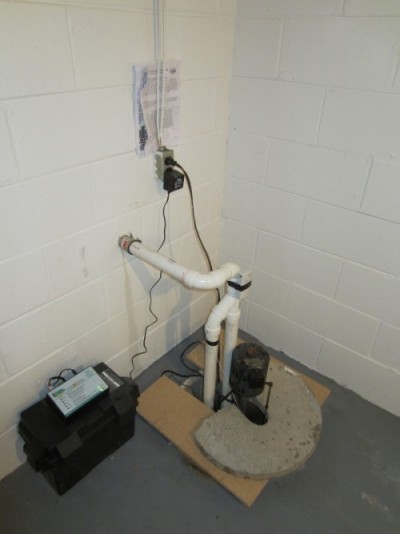When you mention a sump-pump to homeowners, the lucky minority will stare at you blankly, not knowing what they are or the damage they can prevent when faced with a moisture problem. However, according to the American Society of Home Inspectors more than 60 percent of homes in the U.S. suffer from below ground wetness.
On top of that large percent of homes are the countless others that will experience a moisture emergency or flooded basement/crawl space at some point. Unfortunately, it does not take a large amount of water to enter your home before the damages can reach thousands of dollars in structural damage. In addition to that the wet conditions can lead to mold or mildew that can deem your home uninhabitable.
There are other ways to help alleviate concern over moisture entering your home such as drain and gutter repairs. If those fail, you knowing the right sump pump for your home can save you a large amount of money over the life of your home.
Sump-pump: The Basics
A sump pump is a small pump installed in the lowest part of a basement or crawlspace. Its job is to help keep the area under the building dry and to prevent it from flooding. Usually, sump pumps are installed in specially constructed sump pits.
Water flows into the sump pit through drains or by natural water migration through the soil. The sump pump’s job is to pump the water out of the pit and away from the building so the basement or crawlspace stays dry. Sump-pumps come with either a cast iron or plastic core with the latter being the more expensive of the two.
Despite the savings of the plastic core, most home specialists would recommend the cast iron core as a worthy investment in your home. This is due to to the cast iron core’s ability to dissipate heat and lengthen the life of the pump.
Submersible vs. Pedestal
There are two main types of sump pumps, and they are the submersible pump and the pedestal pump. The submersible pump is encased in a waterproof housing and located in the water. The pump sits at the bottom and an outlet pipe near the top.
There is a flat grate at the bottom of the pump to keep out debris. When moisture is present, the pump turns on, and water is sucked through the grate, up the pipe, and out of the home. The advantages of the more expensive submersible pump come from the ability to have a lid. The lid helps reduce pump noise and keep debris from falling into the pump. The lid also helps lock in moisture and keeps it from entering into other areas of the home.
The other sump-pump is the pedestal pump that resembles a long stick with a fat head. The pedestal keeps the pump out of the pit, away from the water even when the pit is full. An inlet pipe reaches down to the bottom of the pit to draw the water out. Since the motor and pump are out of the water, pedestal pumps are usually louder — but less expensive — than submersible pumps.
Why Should Have a Sump-Pump in Your Basement?
For some homeowners who live in low-lying areas or rapid snow melting zones a sump-pump is required by law. In addition to those, amendments to the U.S. Federal Clean Water Act in 1987 have made sump pumps a requirement in homes that aren’t necessarily at a high risk of flooding. They are also being built in many new construction homes as well.
This is all to minimize the risk of expensive water damage to the home. If you have recently purchased a home that has a sump pump installed, it is a good idea to have a waterproofing professional assess the level of protection against moisture. Homeowners who have a legally mandated single sump pump installed can have a false sense of safety.
Often, homes that have a need for one sump-pump likely have a need for multiple sump pumps. Having a professional opinion on the matter could make the difference in protecting your house from costly moisture damage.
The writer, Brian Levesque, is a home improvement blogger who discusses ways to maintain and repair one’s home. He knows how insidious water damage could be, and for those looking to take measures to prevent water damage – including sump pump installation – he recommends going to raleighwaterproofinginc.com. If you wish to learn more about Brian you can visit on Google+.
